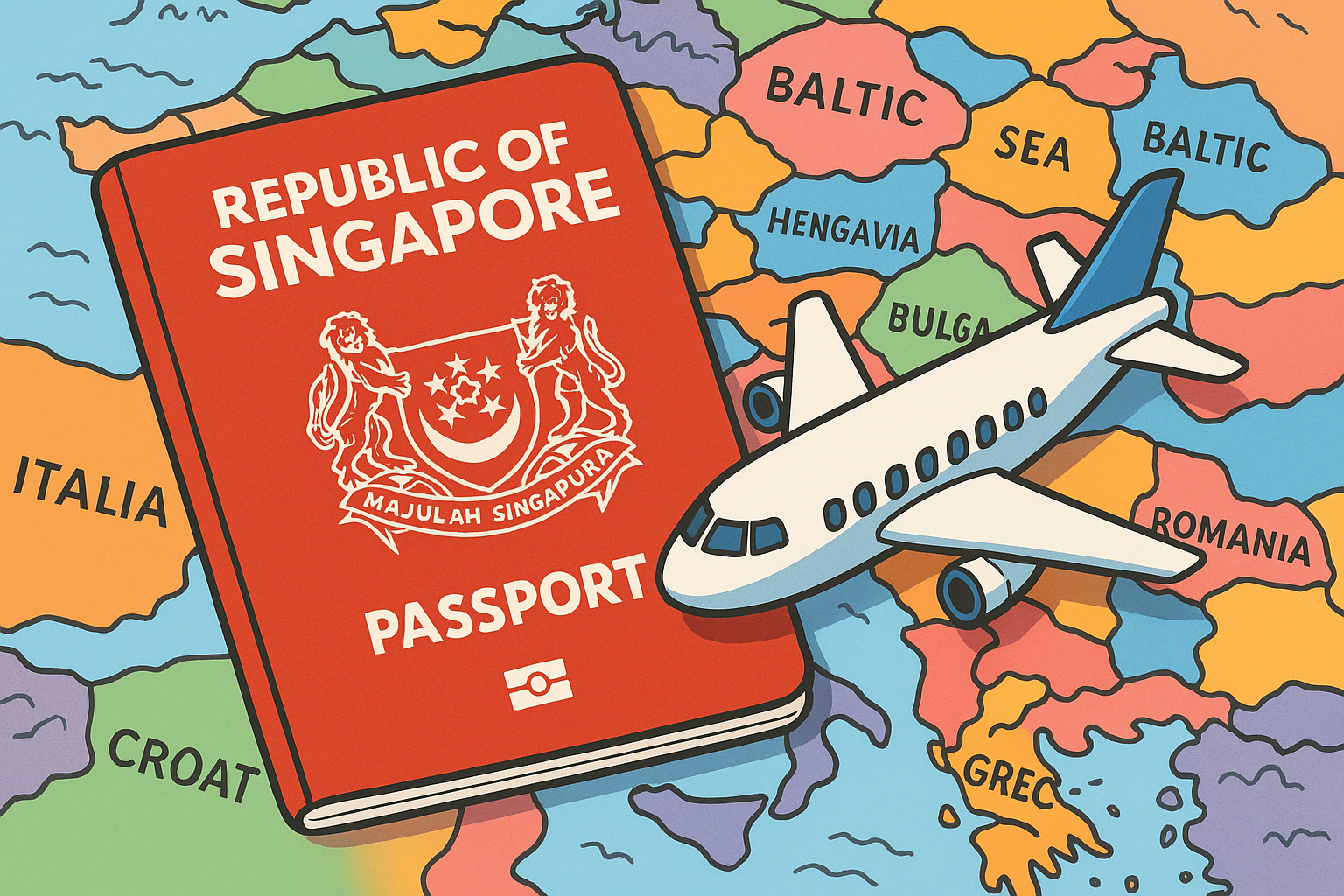The 2025 Henley Passport Index reveals a shift in global rankings, with the U.S. passport declining to 10th place, while countries like Singapore and Italy rise to the top.

@Canva
In 2025, the Henley Passport Index revealed an unexpected truth: the United States passport has reached its lowest ranking ever, now sitting in 10th place.
This marks a steady decline that began in 2014 when the American passport held the top spot alongside the British one. Today, U.S. citizens have visa-free access to 182 destinations, four fewer than the previous year and 11 fewer than Singapore, which currently holds the top position.
Several factors have contributed to the U.S.’s drop. The most significant are increasing restrictions on foreign travelers and increasingly stringent visa policies. Moreover, a $250 fee, known as the “visa integrity fee,” has been introduced, which could potentially hinder future reciprocal visa agreements. Experts argue that Washington’s failure to negotiate new bilateral visa exemptions while other countries push forward with such agreements has also played a key role.
Countries at the Top of the List
In stark contrast, Singapore leads the Henley Passport Index 2025 with access to 193 destinations. Japan and South Korea follow closely behind, each with 190. A group of seven European countries—Italy, France, Germany, Spain, Ireland, Denmark, and Finland—share the third spot, each offering visa-free access to 189 destinations.
This elite status results from stable diplomatic policies, a low perception of migration risk, and active participation in multilateral organizations.
Countries on the rise and fall
The United States isn’t the only country to have lost ground. The United Kingdom has seen its passport lose some of its luster, dropping to 6th place with access to 186 destinations. In contrast, countries like the United Arab Emirates have made remarkable jumps. Over the past decade, the UAE has moved from 42nd to 8th place. China has also improved its position, moving from 94th to 60th, although it remains outside the Schengen Area.
Among the positive surprises is India, which has climbed eight places in the last six months, despite a modest increase in visa-free destinations. This shift highlights the impact of visa diplomacy, even with small changes.
The bottom of the rankings: war and instability dominate
At the other end of the spectrum, the weakest passports are those from countries plagued by conflict and internal instability. Afghanistan sits at the bottom of the list, with access to only 25 destinations. Following Afghanistan are Syria, Iraq, Pakistan, Yemen, Somalia, Libya, and Nepal, all nations affected by conflict, political isolation, and internal turmoil. For citizens of these countries, travel is often a luxury that is practically out of reach due to high bureaucratic hurdles, elevated costs, and frequent rejections.
In a world that is economically interconnected but politically fragmented, the passport remains a mirror of international relations. It’s not just a travel document; it’s an indicator of a nation’s geopolitical weight.
An increasingly unequal world of travel
While the average number of visa-free destinations has nearly doubled in the past two decades (from 58 in 2006 to 109 in 2025), disparities between passports are becoming more pronounced. Some countries improve rapidly thanks to active diplomatic strategies, while others, like the United States, appear to slow down just as the competition intensifies. Those born in the “right” place today enjoy freedoms of movement that are far from guaranteed for everyone. This annual ranking serves as a constant reminder of those inequalities.
Source: The Henley Passport Index
